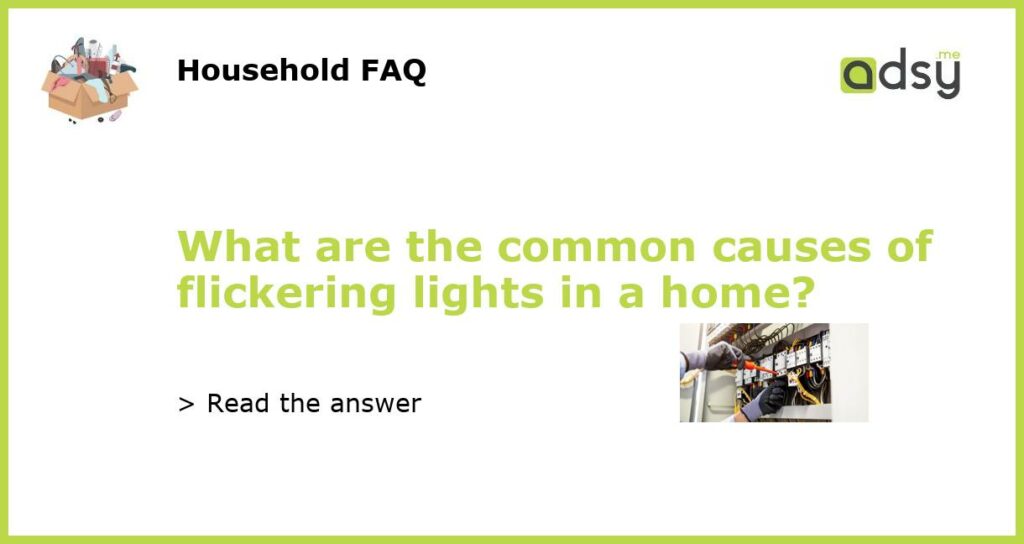Common causes of flickering lights in a home
Do you ever experience the annoyance of flickering lights in your home? If so, you’re not alone. Flickering lights are a common issue in many households and can be caused by a variety of factors. In this article, we will explore the most common causes of flickering lights and provide some possible solutions to fix the problem.
Loose or faulty bulb connections
A loose or faulty bulb connection is one of the most common causes of flickering lights. Over time, bulbs can become loose in their sockets, causing them to flicker or even go out completely. To fix this issue, simply turn off the power to the affected light fixture, remove the bulb, and reinsert it securely. If the problem persists, try replacing the bulb with a new one to ensure it’s not a faulty bulb.
Overloaded circuits or electrical panels
Another common cause of flickering lights is an overloaded circuit or electrical panel. When you have too many appliances or devices connected to a single circuit, it can lead to an excessive amount of electrical current flowing through the wires. This can cause the lights to flicker or dim. To solve this problem, you may need to redistribute the load on your electrical system by plugging devices into different circuits or adding additional circuits to your electrical panel.
Old or faulty wiring
Old or faulty wiring is another possible cause of flickering lights in a home. Over time, wiring can deteriorate or become damaged, which can lead to electrical shorts or irregularities in the flow of electricity. If you suspect that your flickering lights are due to old or faulty wiring, it’s important to have a qualified electrician inspect your home’s electrical system. They will be able to identify any issues and recommend the necessary repairs or replacements.
Voltage fluctuations
Voltage fluctuations are another potential cause of flickering lights. These fluctuations can occur when there is a sudden increase or decrease in the amount of electrical voltage being supplied to your home. Common causes of voltage fluctuations include power outages, lightning strikes, or problems with the electrical grid. If you suspect that voltage fluctuations are causing your flickering lights, consider installing a voltage stabilizer or surge protector to help regulate the voltage and protect your electrical devices.
Loose or damaged electrical connections
Lastly, loose or damaged electrical connections can also cause flickering lights. Over time, the wires and connections that make up your home’s electrical system can become loose or damaged, which can cause intermittent electrical contact and result in flickering lights. If you suspect that loose or damaged electrical connections are the culprit, it’s essential to have a professional electrician assess the situation and make any necessary repairs.
In conclusion, flickering lights in a home can be caused by a variety of factors, including loose or faulty bulb connections, overloaded circuits or electrical panels, old or faulty wiring, voltage fluctuations, and loose or damaged electrical connections. By identifying the underlying cause and taking the necessary steps to fix the problem, you can enjoy steady, flicker-free lighting in your home.

